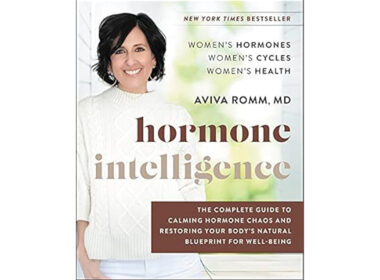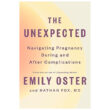Heavy menstrual bleeding (HMB), also known as menorrhagia, is a menstrual disorder affecting anywhere from 9% to 52% of women, depending on objective vs subjective measurements [1]. It’s defined by loss of more than 80 mL of blood (equivalent to 1/3 cup) per period. HMB affects a woman’s overall well-being and is often associated with other menstrual disorders like polycystic ovary syndrome (PCOS) and endometriosis. HMB, on its own, is concerning as around one-third of U.S. gynecological visits are for this reason [1]. To add insult to injury, HMB is usually accompanied by debilitating headaches, cramps, exhaustion, and even anemia. Most concerningly, recent research suggests that women who experience heavy periods may also be at an increased risk for cardiovascular disease [1].
Cardiovascular disease (CVD), which includes heart disease as well as vascular problems like high blood pressure, is the number one cause of death in women. According to the American Heart Association, fully 45% of women over the age of 20 (not just those age 65 or above, as one might expect) experience some form of CVD.
Natural Womanhood has previously written about the connection between menstrual cycles and heart health. Fluctuating levels of estrogen and progesterone throughout the different phases of the menstrual cycle have positive effects on female cardiac function and prevention of cardiac diseases. Because of this known connection, it is critical that unhealthy periods, such as those under the HMB category, are properly assessed to determine and treat their root cause(s).
What did we already know about heavy periods and cardiovascular disease?
HMB is associated with multiple conditions like obesity, hypertension, irregular periods, insulin resistance, and inflammation [1]. All of these increase the risk of CVD. Additionally, HMB is often a key feature of PCOS and/or endometriosis, and both of these increase CVD risk as well. In a large 2023 study of over 170,000 teen girls between the ages 13-17, those with PCOS were at a 30% increased risk for high blood pressure [2].
Scientists also already knew that irregular cycles, which often coexist with HMB, were connected to cardiovascular and/or metabolic disease risk–and even early death. Still, they didn’t know whether women with HMB alone were at increased risk for CVD. So, in 2024, researchers at Texas Tech University wanted to close this gap in research and determine whether or not women with HMB alone are at an increased risk for CVD [1].
Is HMB alone associated with CVD?
The Texas Tech researchers conducted a retrospective cross-sectional study using the 2017 National Inpatient Sample (NIS) Database. They examined all hospitalizations of women diagnosed with HMB between the ages of 18-70 in 2017. The researchers concluded that there is a strong direct relationship between HMB and CVD in women under the age of 40 regardless of additional known CVD risk factors, like obesity and other menstrual disorders.
Women with HMB were at least twice as likely to experience some form of CVD compared to women without menstrual disorders [1]. Women with HMB were 70% more likely to suffer from stroke incidence than those without. This elevated risk was primarily in the age group under 40 years, leading the researchers to recommend regular screenings, for young women especially, to detect the onset of menstrual disorders like HMB and help avoid adverse outcomes of menstrual disorders like CVD. And while women with irregular cycles plus HMB were at increased CVD risk, the Texas Tech researchers found that the highest risk was in women with HMB alone.
Researchers clarified that HMB increases CVD risk with or without PCOS
One primary cause of HMB is PCOS. Because PCOS is already known to increase the risk of CVD, the researchers re-examined the data after excluding PCOS cases to account for this known association. Still, HMB, with or without a PCOS diagnosis, increased women’s risk for CVD.
The Texas Tech study supports other recent research
A 2024 study out of the UK published in Frontiers in Endocrinology similarly “confirmed a causal relationship of excessive menstruation, irregular menses, and dysmenorrhea on cardiovascular outcomes independent of sex hormone levels” [3]. The researchers specifically noted the increased risk for those with HMB who experienced irregular cycles.
What do we still not know?
Because the Texas Tech study was a cross-sectional study, it did not allow the researchers to determine causality between HMB and CVD [1]. They know there’s a connection (correlation) but not whether there’s causation (x causes y). The researchers also couldn’t tell how long the women had had HMB, and therefore how many years might elapse between onset of HMB and experiencing CVD. These details would help to explain the level of risk associated with HMB and chronic CVD disease like atrial fibrillation or one-time CVD events like heart attacks.
Why understanding the connection between heavy periods and cardiovascular disease matters
Fortunately, we don’t have to wait until further research clarifies exactly how heavy periods relate to cardiovascular disease risk before taking action. Just knowing that women under the age of 40 who experience heavy menstrual bleeding may be at increased risk helps healthcare clinicians with screening and education on heart-healthy lifestyle choices.
And heavy bleeding isn’t the only menstrual cycle issue to predict CVD risk. Irregular cycles and painful periods are also indicators to watch out for. Eugenia Alleva, M.D., was co-author of a 2023 study finding that women who experienced dysmenorrhea (painful periods) were twice as likely as women who did not to suffer an ischemic cardiac event like a heart attack before age 50.
Dr. Alleva told the American Heart Association, “Menstruation-related factors in general are important to look at since they are specific to the young female population, which is a population overlooked by current risk prediction tools that were developed based on an older and predominantly male population.”
In order to effectively screen for CVD risk, healthcare clinicians have to know what’s normal and what’s not
Harmony Reynolds, M.D., the chair of the American Heart Association’s Committee on Cardiovascular Disease and Stroke in Women and Underrepresented Populations, highlighted “the important role a woman’s gynecologist can play in her overall health, including heart health. Because many women may use annual ‘well-woman’ visits to their gynecologist as their primary point of care, these visits offer an exceptional opportunity to talk about risks unique to women, along with the importance of maintaining a heart-healthy lifestyle, which is a cornerstone of reducing cardiovascular disease risk.”
Dr. Reynolds is right.Our cycles are a fifth vital sign of our overall health and well-being. For this reason, it’s imperative that healthcare professionals understand what’s normal and what’s not when it comes to healthy periods, rather than just Band-Aiding menstrual cycle issues with hormonal birth control. This is true for all clinicians who care for adolescent and/or adult women, be they primary care or family medicine physicians, pediatricians, or OB/GYNs and midwives. And it’s especially crucial when it comes to effectively screening for cardiovascular disease risk factors.
I have HMB. What can I do to decrease my risk of cardiovascular disease?
As a Fertility Awareness Method (FAM) instructor who has struggled with heavy periods her entire life and works with clients dealing with HMB, I know that this information can feel like a death sentence. You may be wondering, “Is there anything I can do to help heal my periods and decrease my risk for CVD?” Thankfully, the answer is a resounding yes.
Our hormones impact our general health, and our overall health helps the body maintain normal hormone production. Regular exercise, stress management, and balanced nutrition can all help to regulate our hormones and reduce HMB. And since hormonal contraceptive use is associated with increased heart disease risk, switching to a Fertility Awareness Method for family planning can be another heart-healthier lifestyle choice. Best of all, when you chart your cycle, you can work with a doctor trained in Restorative Reproductive Medicine who can treat issues like HMB at their roots. Your heart will thank you!
Additional Reading:
Reasons Women Need Periods: The role of the menstrual cycle in heart health
Irregular menstrual cycles in teen girls can predict future metabolic syndrome







